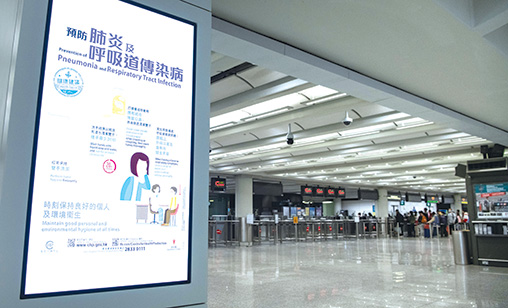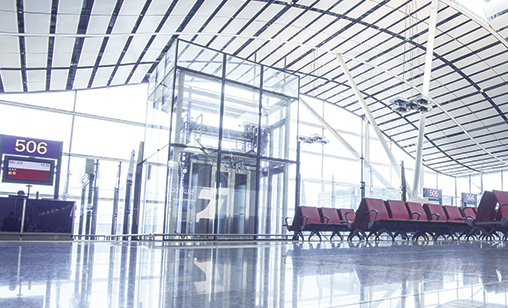Main Story
Asia-Pacifc carriers bear brunt of COVID-19’s ravaging attack
The global aviation landscape is being changed, probably irrevocably by the COVID-19 pandemic. Airlines are struggling to negotiate the worst crisis in aviation’s history and Asia-Pacific carriers are the suffering the most damage from the pandemic. The region’s airlines, making money in 2020 is no longer a prospect. Survival is the name of the game. Associate editor and chief correspondent, Tom Ballantyne, looks at the crisis and its implications.
April 1st 2020
“For airlines, it’s apocalypse now.” Read More » These were the words of International Air Transport Association director general and CEO, Alexandre de Juniac as he pondered the financial bloodbath confronting the association’s 290 member airlines brought on by the random destruction of the coronavirus, or COVID-19, pandemic.
With 260 of its member carriers on the financial brink or losing money before COVID-19 began assaulting global aviation, and with more than 80% of commercial passenger services grounded, the prospects for the world’s airlines could be catastrophic.
 |
At press time, their revenue losses, if worldwide travel bans remain in place for just three months, will be US$252 billion, more than double the figure predicted by IATA only week earlier. And only three months of crisis appears extremely optimistic.
IATA’s latest forecast, said Asia-Pacific airlines would be hardest hit by the pandemic, losing more than $88 billion in revenue, followed by Europe ($76 billion) and the U.S. at $50 billion.
Losses in the second quarter, to June 30, will be $39 billion, compared with a $7 billion profit in the same period last year. Flight bookings were down by 50% in March and in April and predicted to decline by 40% for May.
Cash burn in the second quarter will be severe, said de Juniac. “We estimate airlines could be burning through $61 billion of their cash balances in the second quarter. Airlines cannot cut costs fast enough to stay ahead of the impact of this crisis. We are looking at a devastating net loss of $39 billion in the second quarter,” he said.
“The impact on cash burn will be amplified by a $35 billion liability for potential ticket refunds. Without relief, the industry’s cash position could deteriorate by $61 billion in the second quarter.”
IATA does not expect airlines to return to their position of year-end 2019 and said past experience of a rapid recovery after the crisis has passed and would not happen this time. Full recovery won’t be until 2021.
“Within a matter of a few weeks, our previous worst-case scenario is looking better than our latest estimates. But without immediate government relief measures, there will not be an industry left standing. Airlines need $200 billion in liquidity support to make it through. Some governments have stepped forward, but many more need to follow suit,” he said.
IATA has written to the heads of 18 Asia-Pacific States to appeal for emergency support, including Bangladesh, India, Japan, Malaysia, Pakistan, Philippines, Republic of Korea, Thailand and Vietnam. The letter asks they provide direct financial support to passenger and cargo carriers to compensate for reduced revenues and liquidity attributable to travel restrictions imposed by the COVID-19 pandemic.
 |
IATA also has sought tax relief in the form of payroll tax rebates paid to date in 2020, and/or an extension of payment terms to the end of the year as well as a temporary waiver of ticket taxes and other government imposed levies.
“A growing number of governments in the Asia-Pacific, including Australia, New Zealand and Singapore, have announced financial relief packages for the airline industry. We are grateful to them for the assistance rendered during this dark period for the airline industry. But we need more governments to come on board to support the airline industry serving their markets,” said IATA’s regional vice president Asia-Pacific, Conrad Clifford.
With carriers fast running out of cash, a scenario likely to become reality within one or two months, a liquidity crunch is coming. With $35 billion to be refunded to customers for cancelled flights IATA is advocating airlines issue vouchers to passengers, in lieu of cash payments, that can be reclaimed for tickets after the crisis is over.
IATA chief economist, Brian Pearce, said the fall in demand will be deepest in the second quarter, with a 71% drop forecast. The impact will be severe, driven by the following factors:
• Revenues are expected to fall by 68%. This is less than the expected 71% decline due to the continuation of cargo operations, albeit at reduced levels of activity
• Variable costs are expected to drop sharply, by some 70% in the second quarter, largely in line with the reduction of an expected 65% cut in second quarter capacity. “The price of jet fuel has fallen sharply, although we estimate fuel hedging will limit the benefit to a 31% decline,” Pearce said.
• Fixed and semi-fixed costs amount to nearly 50% of an airline’s costs. “We expect semi-fixed costs (including crew costs) to be reduced by a third. Airlines are cutting where they can, while trying to preserve their workforce and businesses for recovery,” IATA said.
| 'We are trying to put together how we will restart operations and return to normal after the health crisis. The co-ordination between States to lift barriers to travel is a key issue we will have to work out with governments about organizing the lifting of travel restrictions. We are working on that. It has to be organized, otherwise it will be impossible to predict and work out by the airlines. If it is a case-by-case bilateral restriction to lift it will be difficult to implement. So, we are trying to find a coordinated solution' |
| Alexandre de Juniac IATA director general and CEO |
Airlines is not the only aviation sector in trouble. Airports are suffering badly as their customers disappear. Along with air navigation service providers, they are losing billions of dollars after fees were suspended to ease the pain for airlines.
Airbus, Boeing and Embraer are steeling themselves for requests from airlines to cancel or defer deliveries of aircraft that no longer are required, at least for some time.
Millions of aviation industry workers and employees at support service companies and in the travel sector have been put on no-pay leave, stood down or made redundant. At airlines, recurring training programs for staff such as cockpit and cabin crew must continue so they can be ready for a rapid return to work when the recovery starts.
In the MRO sector, engineers must be kept on the payroll to maintain the thousands of aircraft grounded across the region to ensure airline fleets can be safely returned to service when called up to fly.
The one sector in the industry experiencing a revival in its business, after several years of woeful demand, is air freight. All-cargo aircraft are being kept busy delivering medical supplies to affected communities around the world.
China’s slow emergence from its virus crisis has re-opened Mainland d factories and produced a rise in overseas shipments that are keeping global supply chains working. Qatar Airways Cargo has resumed scheduled belly-hold cargo operations to China with wide-body passenger-configured aircraft on March 30, adding to its existing freighter service.
“We are pleased to resume belly-hold cargo operations to China where the COVID-19 pandemic has been significantly contained and industrial production is being restored nationwide,” Qatar Airways Group chief executive, Akbar Al Baker, said. Several other airlines are doing the same, using passenger aircraft to carry freight.
There are two questions everyone wants answered: How long will the crisis last and who will survive? The response to the first is easy. No-one knows. Optimists suggest recovery could begin as early as June. Others believe it will be much later in the year or sometime in 2021.
The extent of the collapse and the difficulty of getting back to normal is reflected in the latest data from airline data provider OAG. It reported that in the last week of March alone, airlines removed just over 20 million scheduled seats from schedules worldwide.
 |
In percentage terms it was the single largest cut in capacity recorded by OAG at a global level. “The aviation industry is now less than half the size reported in mid-January as carriers in the United States and India have worked through their recently announced changes,” OAG said.
“The ten largest regional markets all report more capacity reductions with South Asia and the Southwest Pacific both recording around two-thirds of capacity dropped week on week as carriers such as Singapore Airlines, Qantas, and Air New Zealand have made additional reductions to their planned programs,” OAG said.
“Recent optimism that Northeast Asia was seeing the first signs of some capacity additions have been dampened with China and Japan reporting week on week capacity cuts, although the Mainland domestic market does see an increase in levels.”
OAG said it took the airline industry eight weeks for global capacity to fall from 106 million to 90 million and another two weeks to decline to 49 million. “With a number of schedule updates expected and no real signs of capacity [recovery] we could expect capacity to be closer to 44 million seats a week,” it said.
“If deeper cuts take place in some of the major markets then perhaps we will come close to 40 million. At that point, we would hope to see some signs of a recovery occurring.”
Another factor critical to recovery is when governments across the region and the world will open their borders to travelers. China is freeing up its domestic market, but has imposed more restrictions on international flights. IATA has commenced discussions with governments to ordinate an orderly resumption of route re-starts post the pandemic outbreak.
So who will survive and who will disappear? IATA said there is clearly a substantial risk of bankruptcies among airlines but the extent of them depended on the strategies of various governments.
 |
“At this stage, it is difficult to give you a number of potential bankruptcies in the second quarter because the effects of all these [government] packages and relief measures are not easy to quantify and appreciate now,” de Juniac said.
Clearly, there are stronger airlines well equipped to withstand the COVID-19 onslaught. Singapore Airlines, for example, is offering shareholders US$3.7 billion in new equity and up to another $6.8 billion in 10-year Mandatory Convertible Bonds (MCB). They will be offered on a pro-rata basis via a rights issue and both issuances will be treated as equity in the group’s balance sheet. It also has arranged a $2.8 billion bridging loan facility with DBS Bank, supporting the group’s near-term liquidity requirements.
The Qantas Group has completed a new round of debt funding, securing $640 million in additional liquidity, to strengthen its position during the Coronavirus outbreak. The debt was secured against part of the Group’s fleet of unencumbered aircraft, which were bought with cash in recent years.
This funding increases the Group’s available cash balance to $1.8 billion, with an additional $600 million undrawn facility remaining available. In the United Arab Emirates, Dubai has undertaken to pump cash into Emirates Airline, though it has not specified an amount.
However, there are several regional carriers who already struggling financially before the crisis and will almost certainly face virtual bankruptcy and closure without government backing. These include Malaysia Airlines, Thai Airways International (THAI), Air India and Phillipine Airlines.
Nevertheless, the first four are government owned and it is unlikely that three of them will be allowed to perish. For example, Thailand’s deputy prime minister, Somkid Jatusripitak, said the government would not allow THAI to collapse and dismissed rumours of lay-offs because of the crisis.
We do know, when sanity returns to the market, that Asia-Pacific airlines in financial trouble before the pandemic must implement deeper corporate re-engineering to stay alive and ensure, if a new crisis erupts, they can see it through.
Nancy Richard says:
February 10th 2024 06:39pm